Table of Contents
Diabetes can be a real problem for your eating habits. Many people can’t determine whether a particular food is good or bad for diabetes. However, scientists created the glycemic index (GI) to determine how significantly foods affect blood sugar levels.
People with diabetes need to avoid certain high-carbohydrate foods that raise their blood sugar levels, but not all types of carbohydrates are offensive to blood sugar levels.
Oatmeal is a popular breakfast, often considered a healthy and fiber-rich food, but is this a scientific fact or a myth?
So, is oatmeal good for diabetics? Let’s find out.
Oatmeal glycemic index: All you need to know
The glycemic index (GI) is a system that attributes a number from 0 to 100 to a particular food based on its glucose content and its effect on increasing blood sugar two hours after eating.
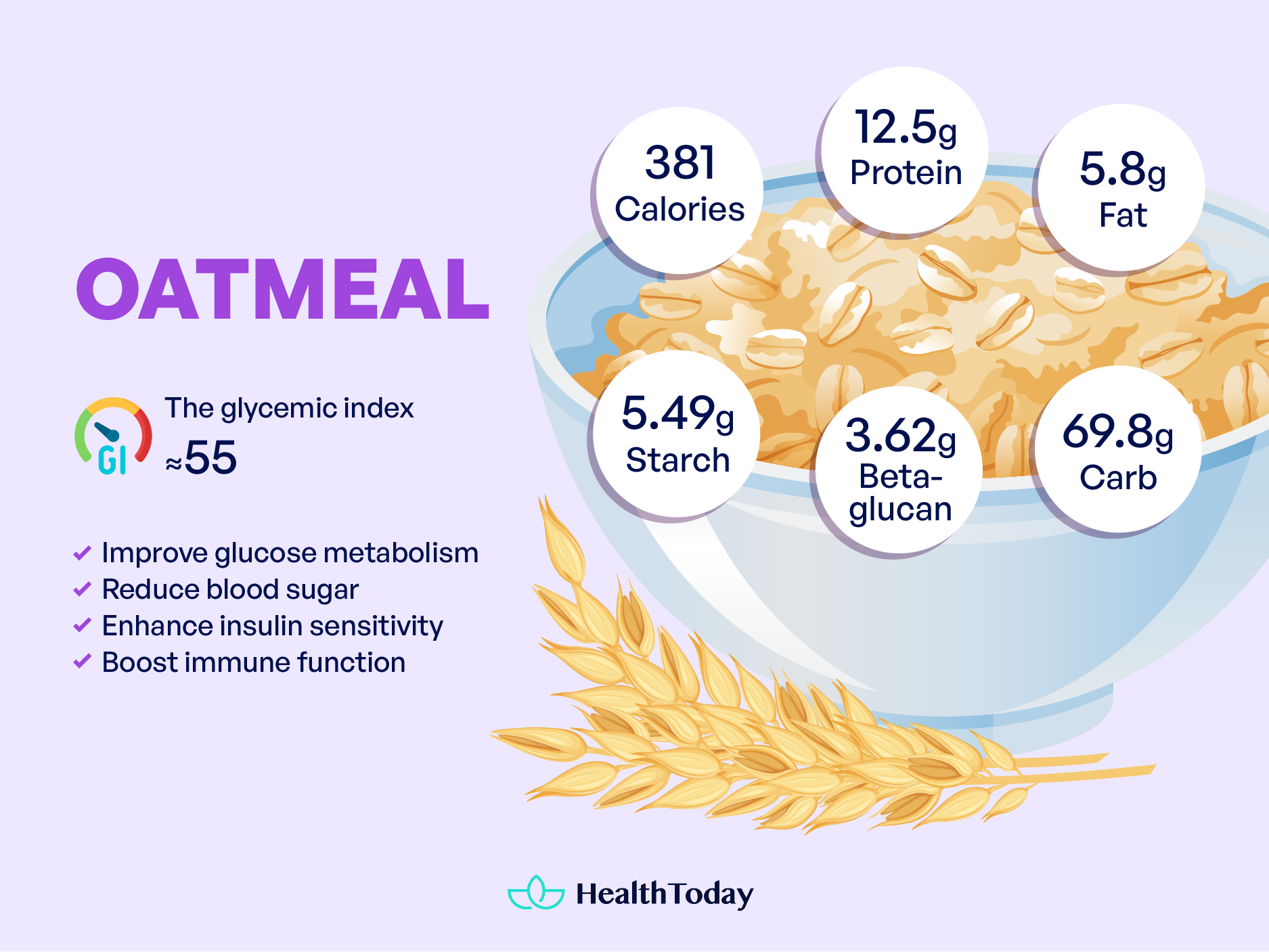
Highly processed foods have higher GIs, while foods rich in protein or fat tend to have lower GIs.
However, the GI alone provides only part of the information. It doesn’t reveal how high your blood sugar might spike after eating the food. To understand the actual effects, we need a more comprehensive approach to the glycemic load (GL), which relates the quality (GI) and quantity of carbohydrates in a food serving, meal, or diet (1).
For example, watermelon has a high GI, but its GL is low. A single serving of watermelon contains few carbohydrates (2). This means it won’t necessarily raise blood sugar.
Does oatmeal raise blood sugar?
Oats contain soluble fiber and a lot of other beneficial nutrients. Let’s look at their nutritional value to get a better understanding of the effects on our metabolism. 100 grams of oats (½ cup uncooked oats or 1 cup cooked oats) provides (3):
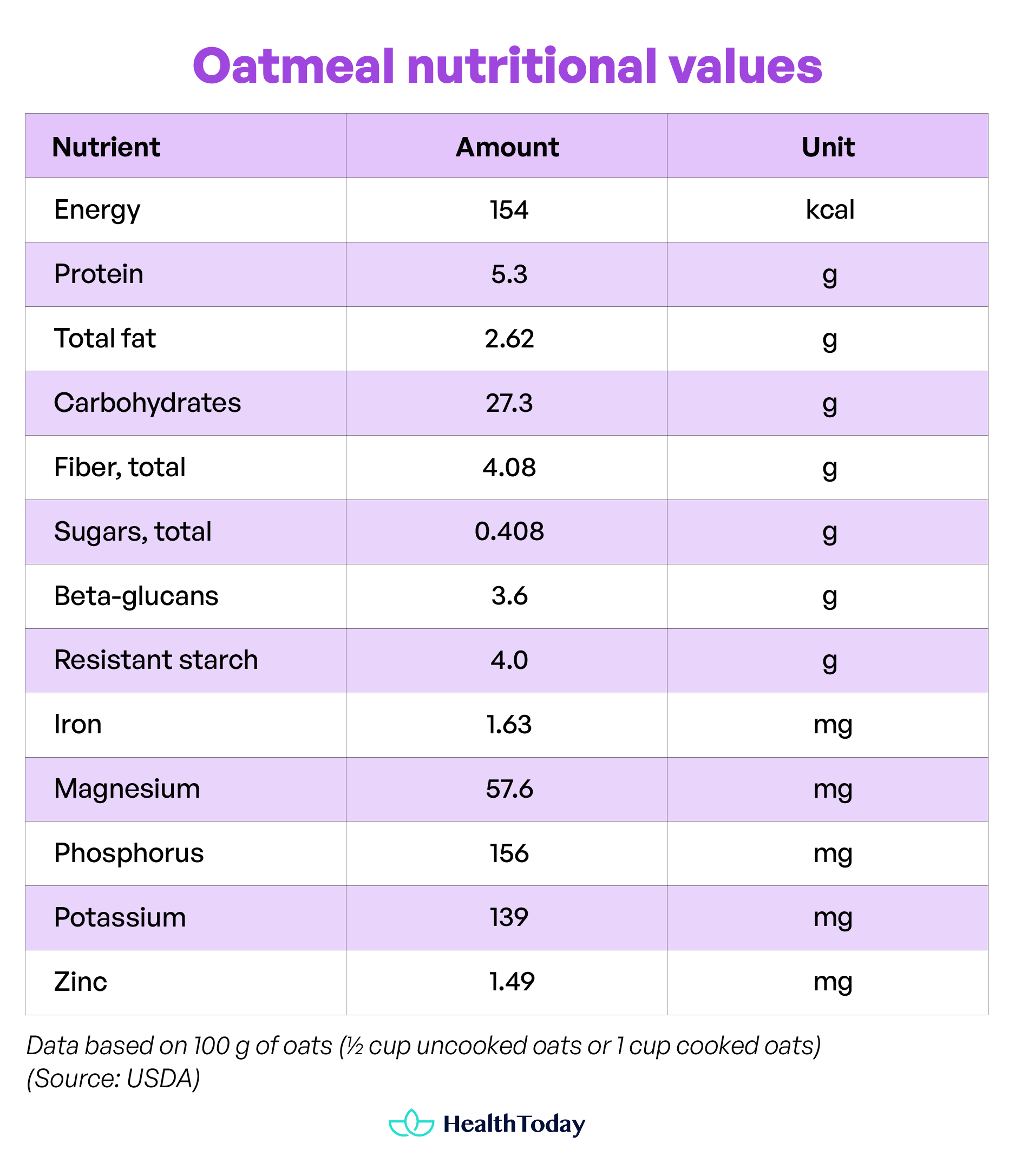
Oats contain 70% carbohydrates, but not all carbohydrates can harm our glucose metabolism.
Studies have shown that a diet with resistant starch (a complex carbohydrate formed by multiple linked glucose units), especially type 1 resistant starch (found in raw legumes, seeds, and grains), decreases post-meal glucose readings and enhances sensitivity to insulin (4).
Also, the beta-glucan component has been shown in several studies to have bioactivity in enhancing the immune system by reducing both inflammatory digestive diseases and colon cancer as well as cholesterol and glycemic levels (5, 6).
Oats, rich in carbohydrates and beta-glucan, improve glucose metabolism, reduce blood sugar, enhance insulin sensitivity, and boost immune function.
The glycemic index of oats
The glycemic index (GI) is a scale from 0 to 100. The values are categorized as low, moderate, or high GI: (7)
- Low GI: 0-55
- Moderate GI: 56-69
- High GI: 70-100
The International Table of Glycemic Index shows that the GI of oats is around 55, which makes it a low GI food (8).
Still, to have a better understanding of glycemic quality, we need to look at the glycemic load of oats. The Glycemic Load of food is categorized as low, moderate, or high:
- Low GL: 0 – 10
- Moderate GL: 11-19
- High GL: 20+
The glycemic load of oat bran is equal to 9, which puts it in the low GL category (8).
Oats are a nourishing ingredient thanks to their low glycemic load, beta-glucan component, and complex carbohydrates, which are easy to digest. All these reasons make oatmeal the perfect ingredient for helping ensure more stable glucose levels.
Oatmeal and diabetes
For those managing diabetes, oatmeal is a great food choice you can add to your diet. Its fiber keeps blood sugar levels in check. The recommended serving for a 2000-calorie diet is 6 ounces, ranging from about half a cup to a full cup (9).
This amount provides a good dose of fiber and essential nutrients, aiding in controlling blood sugar. For a meal, you can try a half cup of oats, maybe with milk, and a fourth to a half of a banana, which is a good way to start incorporating it into a breakfast. Test your blood sugar levels one hour and two hours after breakfast to determine if it will work for you. If the oats raise your blood sugar too high, you may have to cut the portion size to ¼ cup.
For moms-to-be dealing with gestational diabetes, oatmeal is a reliable source of sustained energy, as it extends the time it takes for food to be digested. It may help blood sugar levels remain stable throughout pregnancy. The magic lies in its ability to balance blood sugar and offer essential nutrition, making oatmeal a go-to meal in a pregnancy diet (10).
Best oatmeal for diabetics: What works?
Steel-cut oats are often considered the best oatmeal for people with diabetes. The hearty, chewy texture and slower digestion rate make these oats an excellent choice.
Additionally, oat bran, derived from the outer layer of the oat grain, contains a higher concentration of fiber, which can positively impact blood sugar levels by slowing down digestion (17).
As for the glycemic index, both steel-cut oats and oat bran have lower glycemic index values than instant oats. Because instant oats are more processed, they release their sugars faster than the other two and won’t lower blood sugar as much. Thus, you get more benefits from steel-cut oats and oat bran than instant oats (8).
Other instant and sweetened oat products at the store also have a higher glycemic index and glycemic load compared to steel-cut oats and oat bran.
Oatmeal recipes for people with diabetes
Here are five oatmeal recipes tailored for individuals managing diabetes:
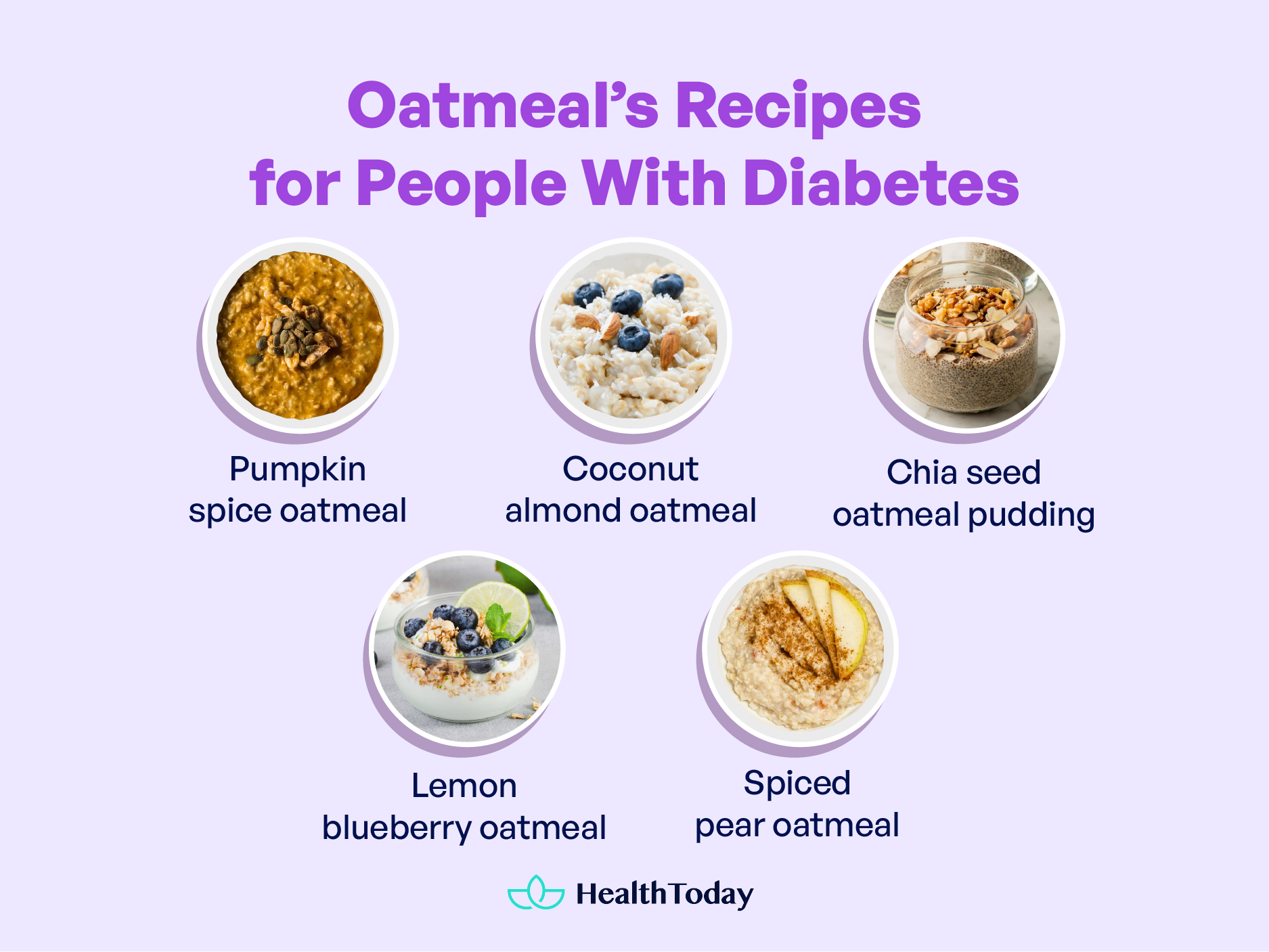
Pumpkin spice oatmeal
- Cook oats with water or milk and add a tablespoon of canned pumpkin puree. (Steel-cut oats and oat bran require water to rehydrate; instant oats may be cooked with milk.) The pumpkin adds more fiber and plenty of beta-carotene, which your body will use for vitamin A.
- Add a sprinkle of pumpkin pie spice or cinnamon for flavor.
- Top with a handful of chopped pecans or almonds for crunch and healthy fats.
Coconut almond oatmeal
- Prepare oats. Again, remember that steel-cut oats and oat bran will require you first to hydrate them with water and then cook them.
- Stir in a tablespoon of almond butter while cooking for added flavor, fat, and creaminess.
- Then add coconut milk after they are cooked for a rich flavor.
- Top with shredded coconut and a few sliced almonds.
Chia seed oatmeal pudding
- Combine oats, chia seeds, and unsweetened almond milk in a jar or bowl.
- Let it sit overnight in the fridge.
- In the morning, add a touch of sweetener (like stevia or a small amount of monk fruit) and a handful of fresh berries.
- Enjoy!
Lemon blueberry oatmeal
- Cook steel-cut oats or oat bran with water and add a splash of lemon juice.
- Stir in fresh blueberries while cooking for natural sweetness and antioxidants.
- Add milk to the oatmeal when done.
- Top with a sprinkle of flaxseeds for added fiber.
Spiced pear oatmeal
- Cook steel-cut oats or oat bran with water. Add the diced pears during the cooking process.
- Sprinkle in a bit of nutmeg or ginger for a warm, spiced flavor.
- Garnish with a few crushed walnuts or hazelnuts for a satisfying crunch.
Tips on how to sweeten oatmeal for diabetics
Oatmeal can be bland-tasting, and people are more prone to add processed sugars without knowing this can be harmful and worsen health, especially for those with diabetes (11).
Discover these ways to sweeten your meal more healthily:
- Fresh fruits: Sliced bananas, berries, or diced apples can add natural sweetness without spiking blood sugar levels due to their fiber content.
- Stevia or monk fruit: These sweeteners are natural alternatives and are not known to raise blood sugar levels (12).
- Cinnamon or nutmeg: These spices not only add flavor but may also help regulate blood sugar. (Studies reveal that cinnamon can help lower blood sugar levels and total cholesterol) (13).
- Vanilla extract: This low GI ingredient adds a pleasant sweetness without additional sugar (14).
Unsweetened applesauce: Provides natural sweetness and a creamy texture (15).
Is Quaker Oats good for diabetics?
Quaker Oats provide a natural form of oats. It’s a good source of fiber, and rich in polysaccharides, making it digest slowly, preventing the rapid elevation of blood sugar. Quaker Oats are an excellent food for diabetics.
How much oatmeal can a diabetic eat?
The serving size recommended is from half a cup to a cup of cooked steel-cut or oat bran, depending on the calorie intake. Professional help will help you best manage your diet.
Are eggs and oatmeal good for diabetics?
Although we may assume that because eggs contain cholesterol, they should not be included in the diet of people with diabetes, new evidence says this may not be correct. Recent studies show that consuming 12 eggs weekly did not cause any negative impacts on body weight, cholesterol levels, or blood sugar levels in type 2 diabetic patients (16).
What breakfast food is good for diabetics?
Any meal that prioritizes whole grain carbs or oats, animal or vegetarian proteins, and unsaturated fats is a good option for a balanced meal for diabetics. Of course, the usual daily evaluation of blood sugar levels will give much insight into how well an individual reacts to different foods. Consult a professional dietitian for a healthier diet.
Should diabetics eat oatmeal first thing in the morning?
When choosing a good breakfast for diabetes, oatmeal is your best bet. Aim for meals low in saturated fats, high in complex carbs, and with a moderate amount of protein. This keeps your blood sugar steady and gives you lasting energy. Oatmeal, with its fiber and slow sugar release, is a great pick for a healthy and satisfying morning meal for diabetics.
Summary
Managing diabetes requires a thoughtful approach to food selection to regulate blood sugar levels. Oatmeal, known for its abundant fiber content, especially beta-glucan and resistant starch, shows promise in positively influencing glucose metabolism.
Lower glycemic index options such as steel-cut oats or oat bran can be advantageous for individuals managing diabetes – and incorporating healthier habits can significantly influence blood sugar levels.







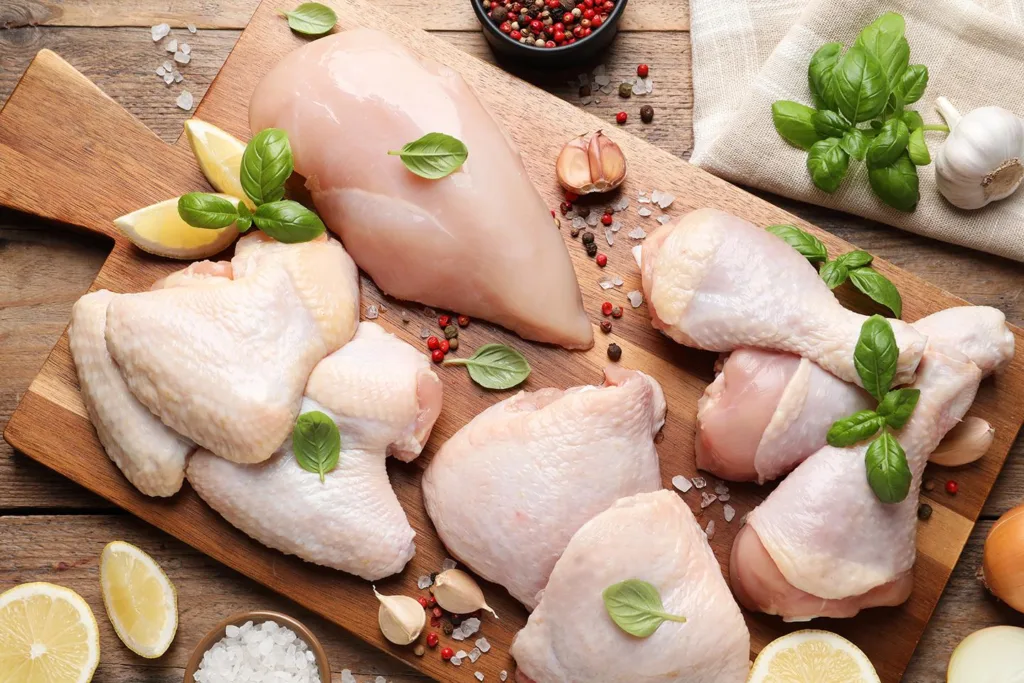

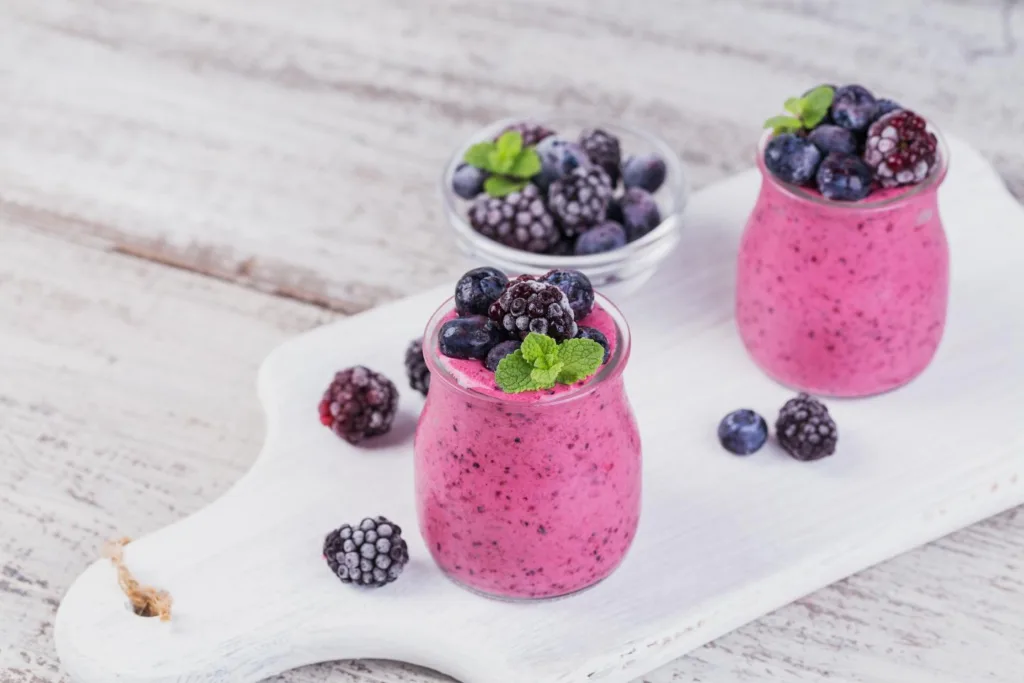



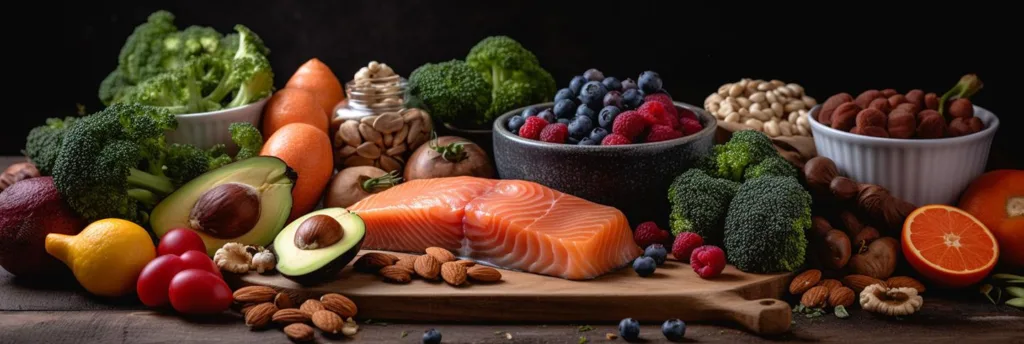

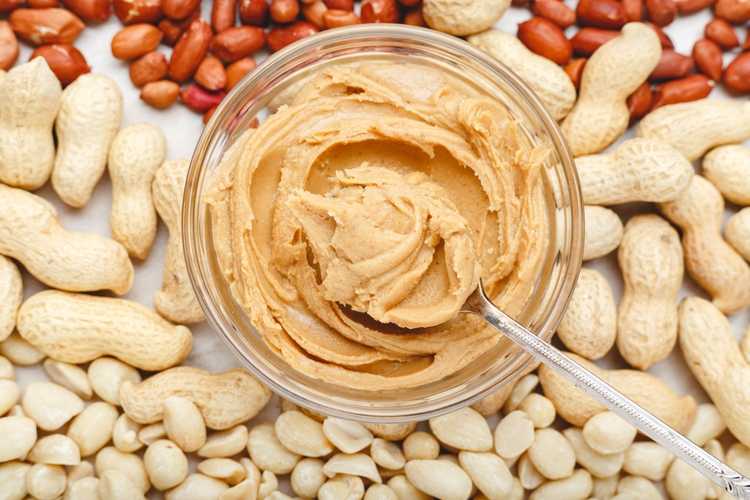
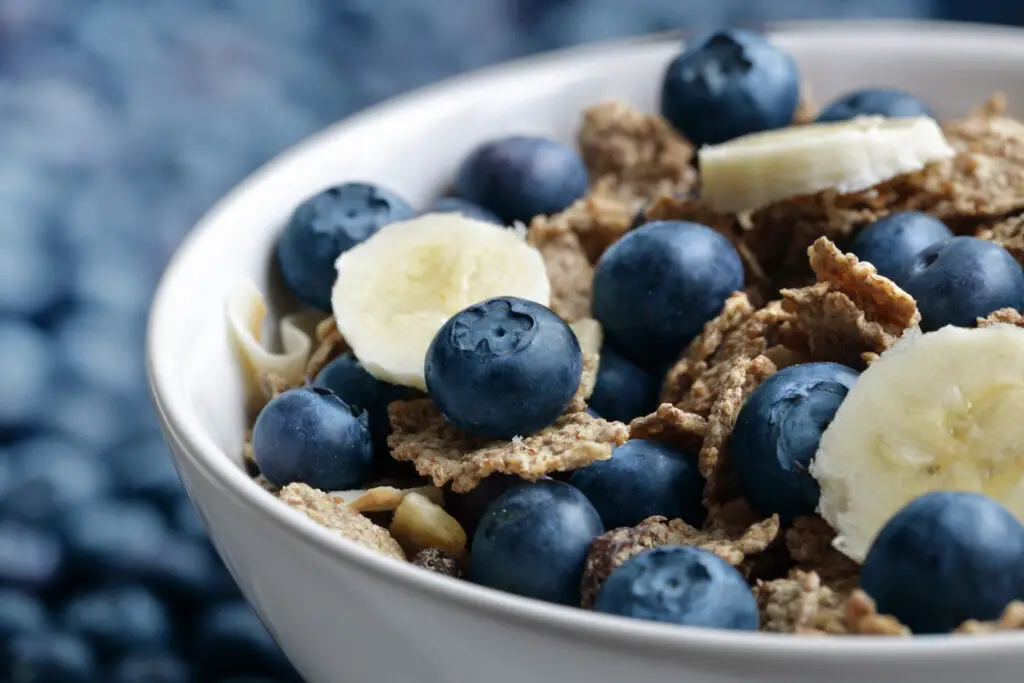
Comments
0